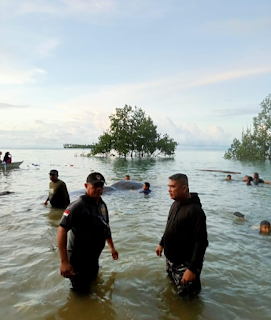2025. January 30. Indonesia, Buol in the north mouth of Makassar Straits, the Central Sulawesi Province. A 9-meter-long cachalot (sperm whale) has stranded and died. The incident is along the country's cetacean stranding corridor.
Mass dolphin stranding in Somalia.
2025, January 23. Somalia, Puntland, between Bosaso and Mareero towns. A mass stranding of 140 dolphins, some of them dead, while others on the verge of dying. A rare case for the region. I've narrowed the investigation solely due to the airburst below. After this meteor airburst, a humpback was also stranded. They look like long-finned black dolphins or pilot whales; or homboboro in the local language.
Updated Post: Mass dolphin stranding in Kenya. 2025, January 3. Kenya, Shela Lamu, Shela region. A total of 6 dolphins stranded. One appeared to be injured with a wound on its peduncle (tail). The dolphins eventually swam off, with restranding later.
The cross to the north indicates Somalia stranding. The meteor airburst: 2024, July 12. Indian Ocean, off the coast of Africa, Somalia, 35km off the coast from the city of Adale which is 136 km north of Mogadishu. Time: 00:09. Coordinates: (2.6, 46.6). e = 8.5, -e = 0.26 or 260,000 kg/TNT. Altitude: 41.5 km. Velocity: 22.4 km/s.

.png)

%20dead.%202.png)
%20dead.%201.png)

.png)

.png)
.png)